Currently
I am a retired professor at Niagara College in the heart of the Niagara Region in Canada. After twenty-nine years of teaching it is finally time to call it quits.
A physicist first, an engineer second, I was never sure, at a young age, whether I should become a physicist or an engineer – luckily, I’ve never had to decide. I have always had an interest in physics and especially in lasers, constructing, at a young age, a number of lasers which I have outlined on these pages.
Hobbies & Interests
In reality, I have too many hobbies and given half a chance could find even more ways to spend the spare time I have. I am very much a “maker” and as well as building electronics and microcontroller-based projects (many of which are outlined on this site), I also have a small collection of vintage micro- and mini-computers, and a few pinball machines (which required a lot of mechanical and electronic work). As time has gone on, I find myself more interested in woodworking, specifically cabinetry, and have built a number of projects ranging from beds for each of my kids to all of the cabinetry in my kitchen – to this end I have built a 600 square-foot workshop in my backyard for this “retirement hobby”.
My wife and I enjoy cooking, often experimenting to reproduce, and even surpass, recipes we have tried at various restaurants. One of our latest culinary adventures was the pursuit of the ultimate French onion soup. I have outlined, on my recipe page, several “perfected” recipes as well as a few hard-to-find ethnic recipes such as kifli.
We make our own house wines a few times a year from kits (no, I don’t press the grapes myself). My tastes have changed gradually from making purely whites (usually a Riesling or a Sauvignon Blanc) to making more red wines (Merlot, Cabernet Sauvignon). In the past, we had toured many Niagara wineries discovering new tastes. And while beermaking was a flop (with my first batch resembling Newcastle Brown, and my second batch resembling “essence of worn sweat socks”), I enjoy experimenting (i.e. tasting) different beers, in the summer enjoying lighter lagers like Sleeman Honey Brown and in the winter opting for heavier ales such as Guinness and Upper Canada Dark Ale (with all this ‘winter beer’ and ‘summer beer’ talk it begins to sound like a gasoline commercial doesn’t it?). As a whole, my favorite beers are usually brewed in an English or Irish style. For a change of taste, I enjoy a nice little German Schwarzbier like Köstritzer.
Over the years, some hobbies (such as skiing, scuba diving, and playing guitar) have waned while other hobbies have become more important to me (like golf). I fancy a lot of things and always thought that when I retire I’d get into model trains – I have always found trains fascinating and worked for CP Rail for a few years developing computerized train control systems .. but who knows?
A history buff, I have an interest in both 19th and 20th century history (Ironically, I was not a fan of history when I was a student but now find it fascinating), but my real pet interest is the history of technology. To that end, I have had opportunities to tour numerous old power plants in Niagara including the recently retired Canadian Niagara Power Company’s Rankine generating station at the top of Niagara Falls (now called the Niagara Parks Power Station and open as a tourist attraction), Sir Adam Beck I at Queenston, and the Decew Falls Plant (which is over 110 years old). None of these plants, when originally built, supplied 60Hz power – Rankine and Beck were 25Hz and Decew was 66.6Hz! I’ve outlined some of the most interesting here as I’ve had a number of unique opportunities to see these places.
Other technologies I find interesting include Telephone Switching Technologies including the Strowger switch, Nixie tubes, and early steam engine technologies employed engines such as the Newcomen engine.
Another primary interest is military technology and military history (Some of this interest likely grew from growing-up during the Cold War). I find the application of technology in the military to submarines, the atomic bomb, and spaceflight intriguing. To this end, many of the books I have read for recreation are historical in nature (for example Failure is Not an Option which outlines, firsthand, the history of the early spaceflight program). I have also visited a number of museums concerned with military technology including the Military Communications and Electronics Museum in Kingston and the the National Museum of the US Air Force in Dayton, Ohio.
As a family, our primary summer and fall activity is camping (while teaching at the college I had one of the few professions where you can actually get use from a camper). We camp both for relaxation (i.e. “real” camping in wooded areas) as well as a vehicle for touring (for example, our three-week tour of the East Coast in 2006 or our trips to DisneyWorld in Florida).
We are also certified “Disney Addicts”, often escaping to Disneyworld, during the winter or spring.
Growing Up
“My Life Story In a Nutshell …”
Born in the late 60’s, I grew up in the 1970’s at a time when lunar missions were just ending, and we still got home delivery of milk from Sunnyside Dairy via a horse-drawn cart (No kidding about the horse-drawn cart, I remember our neighbour running out to the street with a shovel after the horse had passed to gather poop fertilizer for his roses :). The vacuum tube was still king (but solid state was coming of age quickly), and my parents were one of the first ones on the block with a colour TV (they placed a lot of importance on TV – one of those things we just couldn’t live without). The TV brought us images of space missions and of the war in Vietnam, and people seemed preoccupied during this ‘cold war’ period that nuclear war between the superpowers was imminent. TV, too, seemed preoccupied with the whole ‘cold war’ theme and spy shows like Mission:Impossible (a show I just _couldn’t_ miss … and in the days before the VCR that meant the world had to stop) were all the rage!
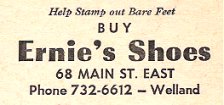 Dad owned a shoe store, Ernie’s Shoes, on Main street and my brother and I spent a good deal of time there in the back while Mom and Dad tended the store. On weekends, we’d make trips to Preston, Galt, and Kitchener to the shoe factories there to pick-up custom orders. On the way home, we’d tuck ourselves into ‘cubby holes’ made between the boxes in the back (these were the days long before seat belts were mandatory). And on the way home, we’d often get a special treat, a hot hamburger from either the Knotty Pine or Gulliver’s Travels restaurants! On weekends we weren’t “on business”, we’d go on day trips to places like Burgoyne woods in St. Catharines. Weekend trips were common and we’d go places like the Henry Ford Museum in Detroit as a day trip (leaving very early in the morning, and coming home very late at night).
Dad owned a shoe store, Ernie’s Shoes, on Main street and my brother and I spent a good deal of time there in the back while Mom and Dad tended the store. On weekends, we’d make trips to Preston, Galt, and Kitchener to the shoe factories there to pick-up custom orders. On the way home, we’d tuck ourselves into ‘cubby holes’ made between the boxes in the back (these were the days long before seat belts were mandatory). And on the way home, we’d often get a special treat, a hot hamburger from either the Knotty Pine or Gulliver’s Travels restaurants! On weekends we weren’t “on business”, we’d go on day trips to places like Burgoyne woods in St. Catharines. Weekend trips were common and we’d go places like the Henry Ford Museum in Detroit as a day trip (leaving very early in the morning, and coming home very late at night).
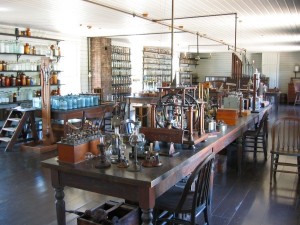 Dad had an interest in history of all kinds … he once said that if he had gone to university he’d have liked to have gone through for a history teacher. In keeping with that, as kids, we visited a lot of historic sites and places. My favorites were places like the Smithsonian Institute in Washington DC and the Henry Ford Museum in Dearborn MI. The Henry Ford was a particularly interesting place as it featured many of Edison’s labs including the Menlo Park lab pictured here. Another prized collection of the museum is one of the oldest Newcomen engines in existence.
Dad had an interest in history of all kinds … he once said that if he had gone to university he’d have liked to have gone through for a history teacher. In keeping with that, as kids, we visited a lot of historic sites and places. My favorites were places like the Smithsonian Institute in Washington DC and the Henry Ford Museum in Dearborn MI. The Henry Ford was a particularly interesting place as it featured many of Edison’s labs including the Menlo Park lab pictured here. Another prized collection of the museum is one of the oldest Newcomen engines in existence.
A bit of that love of history rubbed-off on me and today I have an interest in the history of technology (which is odd, given that I really did not enjoy the subject while in school). The Niagara area where I live, in what was the industrialized north, has a wealth of historical sites of interest including several generating stations which are 100-years-plus old! I have outlined several on this site.
 I took an interest to electricity quite early – ever since Dad had build a flashlight on a yardstick using D cell batteries and a flashlight bulb. As a child, I’m told I liked to string extension cords all over the house and “wire it up” … I found all things electrical interesting! As time went on, I started reading electronics magazines (both old amateur radio magazines from the 60’s as well as Elementary Electronics and other contemporary magazines) and began building projects outright – some in kit form (like Radio Shack P-Box kits) and others from those magazines. Rather simultaneously, my interest in science also developed. One of my favourite places to visit for inspiration was the Ontario Science Center in Toronto (it was an annual trip) where I particularly enjoyed playing with the computers there (they had a large PDP-11 which played tic-tac-toe) as well as seeing the laser demo … lasers were especially fascinating!
I took an interest to electricity quite early – ever since Dad had build a flashlight on a yardstick using D cell batteries and a flashlight bulb. As a child, I’m told I liked to string extension cords all over the house and “wire it up” … I found all things electrical interesting! As time went on, I started reading electronics magazines (both old amateur radio magazines from the 60’s as well as Elementary Electronics and other contemporary magazines) and began building projects outright – some in kit form (like Radio Shack P-Box kits) and others from those magazines. Rather simultaneously, my interest in science also developed. One of my favourite places to visit for inspiration was the Ontario Science Center in Toronto (it was an annual trip) where I particularly enjoyed playing with the computers there (they had a large PDP-11 which played tic-tac-toe) as well as seeing the laser demo … lasers were especially fascinating!
At home, there were a number of diversions including a large (8 foot by 8 foot) train set we had in the basement. As a kid, we’d swing by Niagara Central Hobbies on St. Paul street in St. Catharines – even when closed you could operate the train set in the display window via a capacitance-operated hand-shaped switch on the window. I liked trains, even as a child, and we’d often walk down main street to see trains crossing there (in the early 70’s, trains frequently crossed through town on a multi-track main line which passed the busy Atlas Steels plant in the middle of town). There was even a neat wooden switch tower near that crossing.
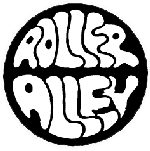 Growing up, I wasn’t a total geek (close to it, mind you, but not totally). One of my favourite pastimes in the late 70’s / early 80’s was roller skating. Welland had an excellent roller rink at the time (the Roller Alley) and I spent a good deal of time there. They played everything from disco to new wave … I even had a “Roller Boogie” T-shirt so popular before the “Disco Sucks” backlash of 1979 which led to embracement of “new wave” (with acts like Devo, ‘M’, the B-52’s, and Duran Duran). Roller skating died as fast as it arrived, and the Roller Alley sat dormant for years, eventually becoming a Fabricland. I enjoyed music since the mid 70’s and that interest certainly grew. By the mid 80’s I had migrated to more ‘alternative’ tastes such as the acts featured on Toronto’s CFNY (acts like Thomas Dolby, Kate Bush, Propaganda, New Order, and Kraftwerk).
Growing up, I wasn’t a total geek (close to it, mind you, but not totally). One of my favourite pastimes in the late 70’s / early 80’s was roller skating. Welland had an excellent roller rink at the time (the Roller Alley) and I spent a good deal of time there. They played everything from disco to new wave … I even had a “Roller Boogie” T-shirt so popular before the “Disco Sucks” backlash of 1979 which led to embracement of “new wave” (with acts like Devo, ‘M’, the B-52’s, and Duran Duran). Roller skating died as fast as it arrived, and the Roller Alley sat dormant for years, eventually becoming a Fabricland. I enjoyed music since the mid 70’s and that interest certainly grew. By the mid 80’s I had migrated to more ‘alternative’ tastes such as the acts featured on Toronto’s CFNY (acts like Thomas Dolby, Kate Bush, Propaganda, New Order, and Kraftwerk).
Other diversions from my purely “techie” interests were provided by my older brother. A “car jockey”, he also built dune buggies from old VW Beetles and seemed to take pleasure in getting me to drive them despite my apparent lack of driving abilities and usual difficulties involving a novice driver encountering a standard transmission (which resulted, one winter day in which I drove a Beetle around our snow-covered crescent, in placement of said Beetle on top of a large mound of snow requiring the digging-out of the vehicle). I owe a great deal of the “worldly” part of my education to him!
Growing up, I did OK in school (although I was preoccupied with “fun” stuff that had nothing to do with my studies so my marks weren’t spectacular), and my interest in both science and engineering progressed (that was the “fun” stuff I mentioned). I migrated from basic electronics (like those P-Box kits, as well as building colour organs and other projects) to digital electronics and computers and in 1979 I got my first “real” computer, an Ohio Scientific Superboard. I spent soooooo many hours teaching myself the BASIC computer language and writing programs on this machine which featured 8K of memory (that’s 8192 bytes) and stored programs on a cassette recorder. It was around this time, as well, that my parents bought me my first laser: a HeNe laser kit from Arkon electronics in Toronto in which I had to assemble the power supply from a bag of parts and a schematic. Owning a laser, back then, was a bit like having your own interstellar spacecraft (or so I thought).
During school (beginning in grade seven) and throughout high school I entered science fairs and this was the primary vehicle which drove my interest in science. Science fair projects allowed me to combine my love of electronics and computers with my interest in science and so was the perfect outlet for me. Not surprisingly, many of my projects involved lasers: starting with that HeNe kit I got and progressing to completely homebuilt devices including several gas lasers (argon and nitrogen) and dye lasers (both nitrogen-laser and flashlamp pumped). My science fair experiences reached an apex when I won first place in Physics at the 35th International Science and Engineering Fair (ISEF) held in Columbus, Ohio.
My Science and Electronics Page contains many personal reflections and memoirs (and a lot more detail) including my experiences at the Niagara Regional Science and Engineering Fair (NRSEF) and International Science and Engineering Fair (ISEF) which shaped my interests.
After high school I avoided reality pursued academic excellence at the University of Waterloo and McMaster University for seven years earning a degree in honours physics (from the University of Waterloo) and later computer engineering (from McMaster University) … I did mention that I was never sure whether I should be a physicist or an engineer didn’t I? During my time as a student I had the usual summer jobs (like programming a custom POS system for a photo shop on a DEC Rainbow computer running dBASE-2 – I completed the program in a month and was developing film for the rest of the summer which was great as photography was a hobby of mine as well). I went on to do more database programming and installing Novell networks which later spun into a business which helped put me through school.
Of course, it wasn’t all academic work and along the way I “played” with the same kind of stuff I started-with years ago. As well as studying computers at University (I took several electives in programming), I learned how to program microprocessors (a Z8 microcontroller, the Z8671 in BASIC, and later the Zilog Z-80 micro in assembly). With a few friends, we’d make a bi-annual trip to Toronto to shop the electronics stores there often scooping some great deals on computer parts. I even built an updated colour organ when in school (I’d built several, my first around 1977) – this time employing active filters using OP-Amps instead of insensitive discrete RC circuits. Along the way, I got involved in building a few high-voltage devices as well.
… and then the real-world caught up to me …
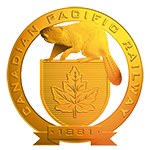 After University and upon graduation as an engineer (can’t be a professional student forever, I guess), I went to work for the control systems group at CP Rail developing train control systems, primarily a client-server based OCS (Occupancy Control System) running under OS/2. I learned a lot about programming at that position, including pre-emptive multitasking and inter-process communications (all under OS/2 while at CP). I became the ‘comms’ guy of the group specializing in communications systems (including RPCs) and, somewhat by accident, became the REXX expert writing install scripts under an OS/2 language called REXX. The entire development team also shared shifts on 24/7 support (in which you were required to carry a pager, laptop, and cellular modem to fix things on-the-fly and keep those trains moving). Support was a dreaded thing as situations might arise that kept you up all night but I did learn a lot from the experience.
After University and upon graduation as an engineer (can’t be a professional student forever, I guess), I went to work for the control systems group at CP Rail developing train control systems, primarily a client-server based OCS (Occupancy Control System) running under OS/2. I learned a lot about programming at that position, including pre-emptive multitasking and inter-process communications (all under OS/2 while at CP). I became the ‘comms’ guy of the group specializing in communications systems (including RPCs) and, somewhat by accident, became the REXX expert writing install scripts under an OS/2 language called REXX. The entire development team also shared shifts on 24/7 support (in which you were required to carry a pager, laptop, and cellular modem to fix things on-the-fly and keep those trains moving). Support was a dreaded thing as situations might arise that kept you up all night but I did learn a lot from the experience.
Long before working at CP, though, I had a fascination with trains and specifically control and signalling systems, so this position was right up my alley! I learned sooooo much at CP – not just technical skills but about business and how it works: it was a perfect start for me and opened my eyes about the world of business and how it all works. I look back and think of how fortunate I was to work in a place that cared about quality – none of this ‘let the client find our bugs for us’ crap you see so often today – we were serious about producing a product that ran reliably and safely, always. I had a great boss (Ed) who really allowed me to develop and I’m grateful for the experiences.
Well, CP was a great place to work but the commute was killing me: we had out first child and I didn’t get to see her much given the three-hour-plus commute each day. Either we needed to move closer to Toronto (the price of housing, ouch) or find a position closer to Niagara. A position at the college appeared and I jumped at it so in 1994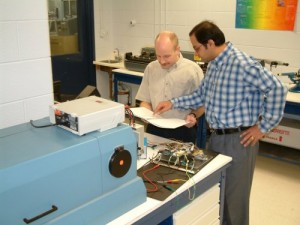 , long before the photonics programs were even conceived, I came to Niagara College as a professor of computer engineering technology. I had thought, early-on, that I might one-day like to teach like this but frankly it was a bit early – mind you, you don’t turn-down an opportunity like this so I left the rail “to be institutionalized”.
, long before the photonics programs were even conceived, I came to Niagara College as a professor of computer engineering technology. I had thought, early-on, that I might one-day like to teach like this but frankly it was a bit early – mind you, you don’t turn-down an opportunity like this so I left the rail “to be institutionalized”.
I was hired to teach hardware as well as windows programming. Hardware, in those days, meant address and data busses, I/O chips, and all that jazz. In one interfacing course (COMP530), students wirewrapped an I/O board using 82xx peripheral chips for a PC ISA bus. In addition, I taught a project-based microcontroller course (COMP630) in which students designed and built a project of their choosing using a PIC embedded MCU, at first using PIC16C5x UV-erasable devices which required students to remove the chip to program and erase it, then later 16F84 and 16F877 flash devices. That course was my “baby” since I developed it from scratch when I arrived at the college. I had already investigated the Microchip PIC series from my hobby and so adopted it at the college. Being a RISC processor, it was easy for students to understand the architecture and the programming and Microchip made development tools like programmers affordable (and software free). Other courses I taught included networking and a windows course which I promptly changed into Windows Programming in which students learned how to write windows applications in C.
Later, as the program evolved, we added a course in Digital Signal Processing and again used a PIC chip, this time the dsPIC 30F. Even in 2022/2023 I used the dsPIC33CH series processors in courses I taught (a course in the computer engineering technician program of all things, a bit of a “blast from the past”).
I became a licensed Professional Engineer (P. Eng.) in the province of Ontario (I applied while still at CP Rail) and while teaching I ‘moonlighted’ as an engineer with VanDenTech Engineering specializing in embedded-systems solutions for industrial motor and power control applications such as large motors (up to 30,000 hp) and control systems such as PID controls. Like CP, VanDenTech was great to work-for and focused on producing high-quality products (many one-off or for a specific application). Those side-jobs helped pay off a mortgage as well as afford the family a few nice trips to DisneyWorld (teaching was a good gig, but didn’t pay as well as the real world).

I began teaching at the college in the fall of 1994 and was a program coordinator from the fall of 1994 until the spring of 2005. Originally coordinator of the computer engineering technology program as well as first-year coordinator, during my tenure I initiated the computer engineering technician program and from there I was coordinator of the computer engineering technician and technology programs. While I was originally hired to teach into the Computer engineering technology program I taught occasionally into other programs. I developed a GenEd course in “Society and Technology” built around the Connections series from James Burke which was taught to all Computer/Electrical/Electronics students. I also taught thin-film deposition technology to the microelectronics manufacturing program in which we taught the entire process of building silicon microchips from doping, lithography, and aluminization – it was that involvement that got me into photonics in the first place (and the presence of a cleanroom facility at the college no doubt helped us get the program in the first place).
In the early 2000’s the photonics program (originally called ‘Laser Engineering’) started at the college and my physics background lent itself well to that. I have always enjoyed the topic of lasers and here was an opportunity to teach it. The demise of the Computer Engineering Technology program a few years later meant I would soon be teaching photonics full-time. So, from 2005 to 2023 I taught laser fundamentals, thin-film deposition and high-vacuum technology, and a host of courses almost exclusively into that program. We offered a number of programs I taught into including two-year technician, three-year technologist, four-year bachelor degree, and an advanced laser certificate program. Along the way I wrote two books on the subject (in 2004 and 2014), mainly to support my courses, as well as a few articles for trade encyclopedias.
Click for a list of my publications on lasers
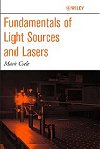 I am the author of a book entitled ‘Fundamentals of Light Sources and Lasers‘ published by John Wiley & Sons in 2004 (ISBN 0-471-47660-9). The text introduces background concepts necessary to understand lasers including basic quantum mechanics. Lasers are covered in detail with practical, real-world examples found throughout. The last six chapters of the text outline various laser systems in detail including visible, UV, and IR gas lasers, semiconductor lasers, solid-state lasers, and tunable dye lasers.
I am the author of a book entitled ‘Fundamentals of Light Sources and Lasers‘ published by John Wiley & Sons in 2004 (ISBN 0-471-47660-9). The text introduces background concepts necessary to understand lasers including basic quantum mechanics. Lasers are covered in detail with practical, real-world examples found throughout. The last six chapters of the text outline various laser systems in detail including visible, UV, and IR gas lasers, semiconductor lasers, solid-state lasers, and tunable dye lasers.
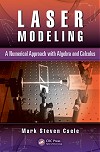
‘Laser Modeling: A Numerical Approach with Algebra and Calculus‘ was published by CRC Press in 2014 (ISBN 978-1-4665-8250-7). This book takes a rather non-traditional approach to modeling laser systems presenting both algebra- and calculus-based models to predict laser performance. Each technique is introduced alongside a practical, solved example based on a commercial laser.
 As an invited author to the Kirk-Othmer Encyclopedia of Chemical Technology (2005), as well as the online edition, I wrote the section on Lasers providing an overview of lasers and related technologies. I have also completed the 2015 update of the same article reflecting changes in technology during the past decade (most notably, the shift towards solid-state lasers).
As an invited author to the Kirk-Othmer Encyclopedia of Chemical Technology (2005), as well as the online edition, I wrote the section on Lasers providing an overview of lasers and related technologies. I have also completed the 2015 update of the same article reflecting changes in technology during the past decade (most notably, the shift towards solid-state lasers).
 I was invited to author an article on lasers for the Ullmann Encyclopedia of Industrial Chemistry, the oldest and most comprehensive reference work in applied chemistry first published in Germany in 1914. The new article has a predominant application-focus (for example, applications such as multiphoton spectroscopy using femtosecond lasers).
I was invited to author an article on lasers for the Ullmann Encyclopedia of Industrial Chemistry, the oldest and most comprehensive reference work in applied chemistry first published in Germany in 1914. The new article has a predominant application-focus (for example, applications such as multiphoton spectroscopy using femtosecond lasers).
Videos of Laser and Thin-Film Labs I did while at the college
Here’s a few links to lab videos I made in 2020 when we were teaching remotely during CoVid – they later served as pre-lab videos. This gives a pretty good idea of what I did at the college:
- Gas Laser Optics 1 detailing alignment of the optics of a HeNe laser
- Gas Laser Optics 2 detailing measurement of gain using a HeNe laser with separate optics
- HeNe Tube Reprocessing a student favourite lab in which a HeNe tube is evacuated and filled with a working gas mix
- Bendix Thermal Evaporator a basic diffusion-pumped system used to make multilayer devices
- E-Beam Evaporator an advanced cryopumped system which made excellent hard coatings
- E-Beam Evaporator (Part 2) detailing actual evaporation procedures
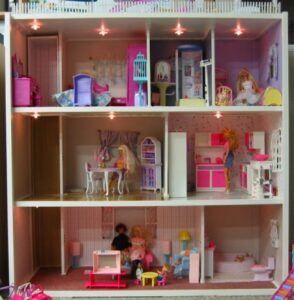 So, by the late 2000’s I had given-up teaching computer hardware (my courses evaporated with the program) to a large extent but still “dabbled” with embedded controllers building odd projects here-and-there. One project that comes to mind was a dollhouse with an elevator which used a PIC 16C876 microcontroller to operate the elevator as well as turn lights on (lights on the floor where the elevator arrived even came on automatically). I remember the project well as it was developed during a particularly long departmental meeting which, as a coordinator, I was required to attend (so at least I did something productive with my time). Another neat project was a twinkling wing for my kid’s Hallowe’en costume – that one used a PIC18F to generate twelve PWM channels which varied the intensity of LEDs on the wire-frame wings in random order. The original idea came from the Main Street Electrical Parade at Disneyworld (which we all loved).
So, by the late 2000’s I had given-up teaching computer hardware (my courses evaporated with the program) to a large extent but still “dabbled” with embedded controllers building odd projects here-and-there. One project that comes to mind was a dollhouse with an elevator which used a PIC 16C876 microcontroller to operate the elevator as well as turn lights on (lights on the floor where the elevator arrived even came on automatically). I remember the project well as it was developed during a particularly long departmental meeting which, as a coordinator, I was required to attend (so at least I did something productive with my time). Another neat project was a twinkling wing for my kid’s Hallowe’en costume – that one used a PIC18F to generate twelve PWM channels which varied the intensity of LEDs on the wire-frame wings in random order. The original idea came from the Main Street Electrical Parade at Disneyworld (which we all loved).
I continued (and still do) to build projects using embedded controllers, including a colour organ for my daughter and a recording accelerometer to capture motion on amusement rides (both of which I have outlined on this site). Since the late-90’s I pretty-much exclusively developed systems using PIC (RISC) processors including the PIC18F and the dsPIC30/33 series of processors (both were used in courses I previously taught). On the software side I kinda like using assembly for the embedded side of things and C/C++ for programming on a PC, usually to support PC-based front-ends (e.g. a logic analyzer project I built which has a front-end that runs on a PC and was programmed in C++ … a PC makes an excellent unit for graphics display) – I still use that instrument to help diagnose problems as they occur in my small collection of vintage computers and my pinball machines. Below I have outlined two of my favourite projects as they appeared in articles in Circuit Cellar magazine.
Click for a list of my Circuit Cellar Articles (embedded controller projects)
 I wrote an article in Circuit Cellar magazine outlining my Color Organ design along with a tutorial or the basic DSP technique of convolution (Issue #249, April 2011). Since developing a DSP course at the college a few years before, I had employed such techniques for a host of applications, in this case to create three very high performance filters for audio separation. And since the DSP chip offers incredible speed, a constant-volume algorithm was implemented freeing the user from the need to adjust the gain of the device. Finally, a phase-control technique was implemented making the light output truly proportional to the audio intensity.
I wrote an article in Circuit Cellar magazine outlining my Color Organ design along with a tutorial or the basic DSP technique of convolution (Issue #249, April 2011). Since developing a DSP course at the college a few years before, I had employed such techniques for a host of applications, in this case to create three very high performance filters for audio separation. And since the DSP chip offers incredible speed, a constant-volume algorithm was implemented freeing the user from the need to adjust the gain of the device. Finally, a phase-control technique was implemented making the light output truly proportional to the audio intensity.
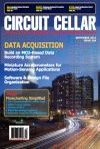 I wrote an article in Circuit Cellar magazine outlining a recording accelerometer (Issue #266, September 2012). Employing an ADXL312 MEMs accelerometer from Analog Devices, this miniature device features a Microchip dsPIC33FJ processor and a 32Mbit ST Flash memory for data storage. Acquired acceleration data may be downloaded to a PC for later analysis. The device was tested on several rides at DisneyWorld – see the Physics@Disney page on this site.
I wrote an article in Circuit Cellar magazine outlining a recording accelerometer (Issue #266, September 2012). Employing an ADXL312 MEMs accelerometer from Analog Devices, this miniature device features a Microchip dsPIC33FJ processor and a 32Mbit ST Flash memory for data storage. Acquired acceleration data may be downloaded to a PC for later analysis. The device was tested on several rides at DisneyWorld – see the Physics@Disney page on this site.
About half of my teaching career was spent in the photonics department and along the way I got to play with sooooo much cool stuff … we had a dedicated class-IV laser lab with at least one of every type of popular laser – CO2, YAG, Excimer, Argon, TEA, Dye, Ti:Saph, HeCd, Ruby – you name it and we probably had it! Of course the odd thing about this was that I had truly come “full circle” returning to physics which is where I started my education many years before. I started my education, and ended my academic career in physics (and in the middle, did a bunch of engineering).
All Good Things Come to an End
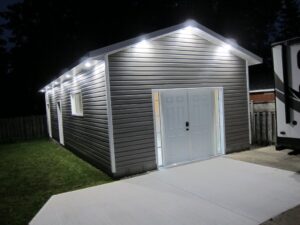 I taught college for 29 years. “It was the best of times, it was the worst of times, it was the age of wisdom“. My first ten years were excellent but times changed (I guess I will just leave it at that … as the Frozen song goes, let it go). Frankly, in 2019 I was ready to quit but, as a friend put it succinctly, I had “Golden Handcuffs”. The pandemic actually helped as teaching from home meant less exposure to the things that drove me nuts but finally, in 2023, I had enough. It was time to retire and get on with other pursuits like building a 600-square-foot workshop in my backyard for woodworking. The shop is complete with 100A electrical service, a heat pump (it is heated year-round), and an awesome 3hp SawStop cabinet saw. I don’t know exactly what my future holds, but I believe it involves making a lot of sawdust!
I taught college for 29 years. “It was the best of times, it was the worst of times, it was the age of wisdom“. My first ten years were excellent but times changed (I guess I will just leave it at that … as the Frozen song goes, let it go). Frankly, in 2019 I was ready to quit but, as a friend put it succinctly, I had “Golden Handcuffs”. The pandemic actually helped as teaching from home meant less exposure to the things that drove me nuts but finally, in 2023, I had enough. It was time to retire and get on with other pursuits like building a 600-square-foot workshop in my backyard for woodworking. The shop is complete with 100A electrical service, a heat pump (it is heated year-round), and an awesome 3hp SawStop cabinet saw. I don’t know exactly what my future holds, but I believe it involves making a lot of sawdust!
… and so, the adventure continues …
Anecdotes and Some Family History
Second generation Canadian born, my ethnic background can best be described as “Eastern European Hotdog”: try Slovak, Hungarian, Romanian, German, and (according to one of those genetic tests) even Polish and Italian. Growing up, we identified primarily with the Slovak (Mom’s side) and Hungarian (Dad’s side) cultures.
My surname, Csele, of Hungarian extraction where a ‘CS’ is pronounced ‘CH’ and so ‘chell-ehh’ is about as close at it gets (although everyone called it ‘Chelly’ which was fine). We’re not even sure grandpa was truly Hungarian as he said he fought in the Romanian army and his nationality is listed as Romanian on his immigration record when he arrived in Halifax in 1930.
BTW, the literal translation of ‘csele’ is ‘ruse’ as in a trick played during a sports game to throw the opposing team off. The name was extracted from the stream/river of the same name … you see, the Csele river in Hungary was ‘tricky’ and was more treacherous than it seemed. According to legend, the surname came from the river in Hungary where King Louis II died during a battle with the Ottomans (the Battle of Mohács, in 1526). The king fell from his horse during battle and fell into the river where he drowned due to the weight of his armor. In honour of the beloved king, soldiers traveling with him adopted the name of the river where he died as a surname.
Well, every family has some unique stories, here’s a few more interesting ones which were told to me over the years.
My maternal grandmother came over from Czechoslovakia in 1938. As she told us, “the Germans were on one side and the Russians on the other, and you knew nothing good was going to come of it”. Less than a year after she left for Canada with her husband, the country was invaded by the Germans.
My great grandfather (her father) came to Canada a year or so earlier to ‘scope out’ the place and purchased a farm in Fenwick – my grandmother and her husband moved into that farm upon arrival. I never met my maternal grandfather as he died young but was told he was very mechanically-minded despite having no formal education in technology or engineering. One story related how he built a samwill from an old circular blade: A few local farmers commented on how silly he was for buying the huge old rusty blade but he linked it to the family car via a huge leather belt to a rear tire rim to power it. Multiple gears allowed speed control of the blade as well. Apparently he rented it out to other farmers to cut their wood as well.
My paternal grandfather came from Hungary in 1930. He was listed on immigration records as Romanian however always associated himself as a Hungarian. Indeed, I was told he served in the Romanian army but I suppose the borders shifted in those days.
He arrived in Canada and was put on a train going out west: in those days immigrants were shipped west to farms where they were needed in trains with armed guards and barred windows. Being a carpenter, he had his tools with him in a leather pouch and during the trip, removed the bars from the windows of his train car. As the train passed Beauharnois Quebec, he saw a large construction project and not wanting to be a farmer, jumped the train along with two friends. They found work immediately on the huge power project which had just started and, with his ability to speak at least five languages, became a foreman. After spending some time on the power project he eventually made his way to Ontario, settling in Hamilton for a time. He sought work as a cabinetmaker but work was scarce due to the great depression. He found work, instead, building coffins (same skills), and years later he came to Welland which had a large population of ethnic Hungarians where he settled, marrying my grandmother. He worked as a carpenter fixing houses and selling them, the original ‘flip this house’ – they (the whole family) would buy a wreck, live in it while repairing it, then sell it for a profit and move on to the next. Eventually he built a permanent home for the family but continued house renos.